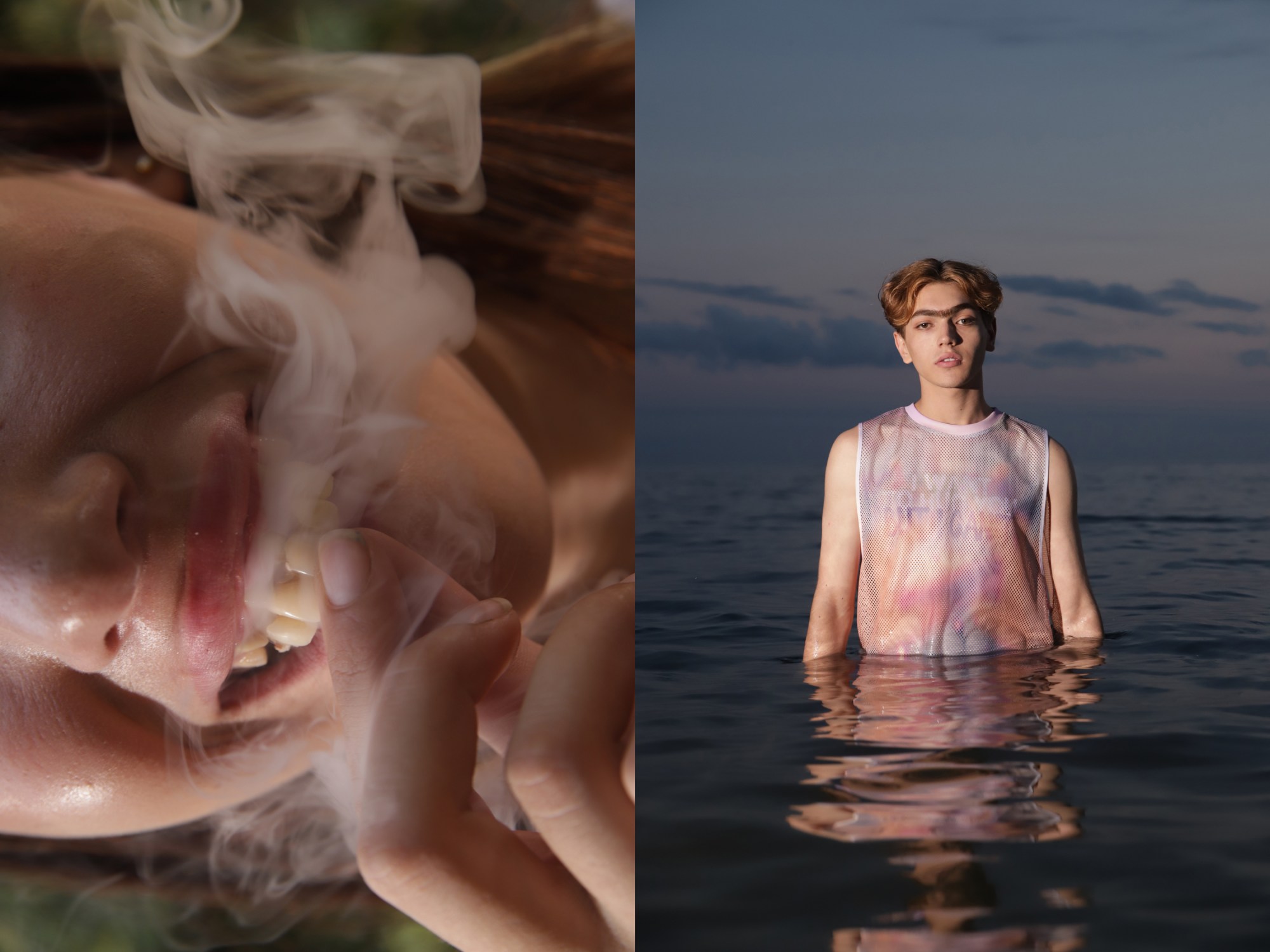Since its inception in 2017, the freewheeling fashion collective Kultrab has taken on a myriad of social issues that have intensely affected Russia. Whether it be calling for drug law reform, advocating for LGBTQ+ rights or environmental activism, Kultrab has emerged as a substantial force for political and social change.
“Kultrab’s mission is to develop activism through culture and fashion, and launch a chain of changes throughout the world by doing so,” says Sasha Chaika, a recurring Kultrab-collaborator, and St. Petersburg-based avant-garde artist. “It’s a small victory each time we see someone who, thanks to us, learned about a problem and then took some step of their own to help solve it.”
Alina Muzychenko and Egor Eremeev founded the collective initially as a way to help crowdfund for MediaZona—a site for independent journalism, focusing on Russian police brutality and injustice. It was founded three years prior by Marie Alyokhina and Nadya Tolokonnikova of Pussy Riot.

“For the site, we designed clothes with the words ‘It will get worse’ (Будет хуже) emblazoned on them, and this brought a lot of attention to MediaZona from a younger audience who wouldn’t necessarily read their articles,” Eremeev tells me. “We realized that with the help of clothing, we can speak out on societal topics and support projects and non-profit organizations that deal with important issues.”
Such issues include a partnership with the Andrey Rylkov Foundation, which promotes humane drug policy in Russia. “The foundation is little-known, and subjected to state repression,” Kultrab says. “At the same time, drug users are one of the most stigmatized groups, as society believes it’s not necessary to help them because they themselves are supposedly to blame. Russian prisons are one-third full of drug-related prisoners, mainly consumers and small dealers.”
Kultrab released a collection in collaboration with the artist 9cyka, with discounts for those who also signed up to donate regularly to the foundation. “This caused a great resonance across the media and ordinary Russian people, because this problem really concerns everyone here—the police can plant drugs on you, and then put you in jail or extort money,” the collective explains. “We held a large event with organized lectures and open discussions, which was supported by very cool Moscow musicians such as IC3SPEAK and 555trax555.”

This event, called Russia 228 Day, drew a crowd of over 3000 people and was held on the official Russian holiday on June 12. The 228 refers to Article 228: the highly-controversial narcotic criminal law that has been used as a method of locking away dozens of activists and journalists, and in 2018 alone, led to over 100,000 imprisonments of nonviolent offenders.
Other projects Kultrab put together include documentary films, made with director Mary Plevitskaya and producer Valya Dekhtyarenko, like Шконка вместо школки (Prison Bed Instead of a School Bench), which centers a 14-year-old teenager named Kirill Kuzminkin, who was imprisoned for a year for having anarchist beliefs. Another film, Строгий режим (Strict Regimen), is about Jan Sidorov and Vlad Mordasov, two young activists who were given jail sentences over six years in length for exercising their human rights via peaceful protest.
“In March 2020, we released a feminist calendar together with the activist Polina Titova, replacing patriarchal holidays with activist ones,” Muzychenko and Eremeev say. “And right now we are part of a campaign in support of activist Yulia Tsvetkova, who faces six years in prison.”
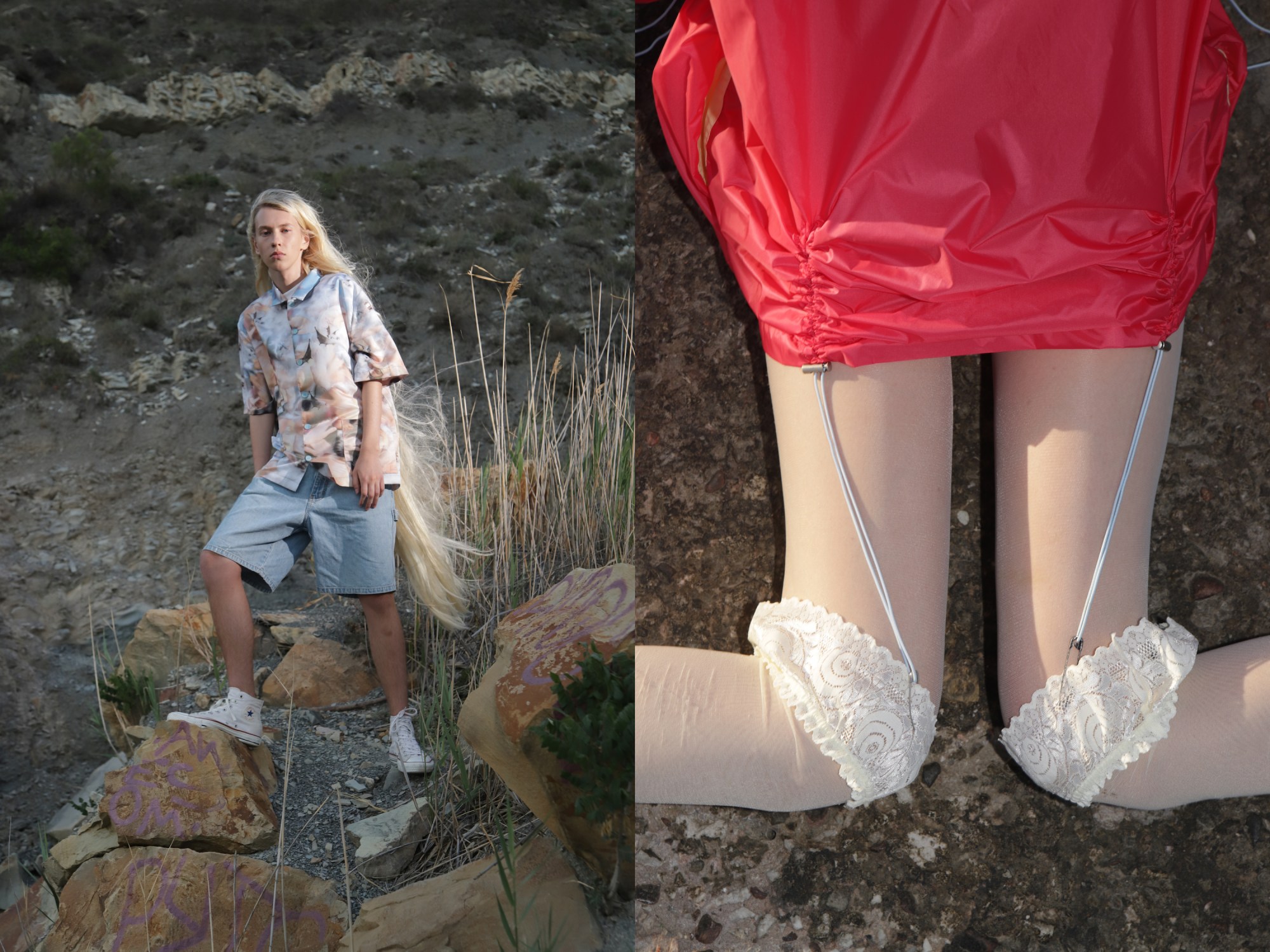
Another past project—Я себя люблю (I love myself)—created with photographer Emmie America and journalist Sima Piterskaia, documents three queer young people and their lives under Russia’s LGBT Propaganda Law, or the “anti-gay law,” which puts LGBTQ+ people in Russia at risk, daily. It’s a series of portraits and interviews that inspire acceptance and self-love, in both Russian and English.
The majority of these projects are funded by their tongue in cheek merch, released in streetwear-style drops. “We are an independent group: we have no sponsors. Clothing happens to be a way to attract attention and earn minimal money to fund ourselves and the small team we work with,” Muzychenko says. “We produce clothes in small drops—each of them expressing some kind of political or activist statement—because we don’t believe in making large batches, which we feel is harmful to the planet.”
This concern for the planet features at the forefront of the group’s latest endeavor—an art project combined with documentary photos by Sasha Chaika called Black Sea Coast Mutation. It speaks to the “damages inflicted by humanity” on the planet, specifically in Russia, where people largely don’t believe in climate change.
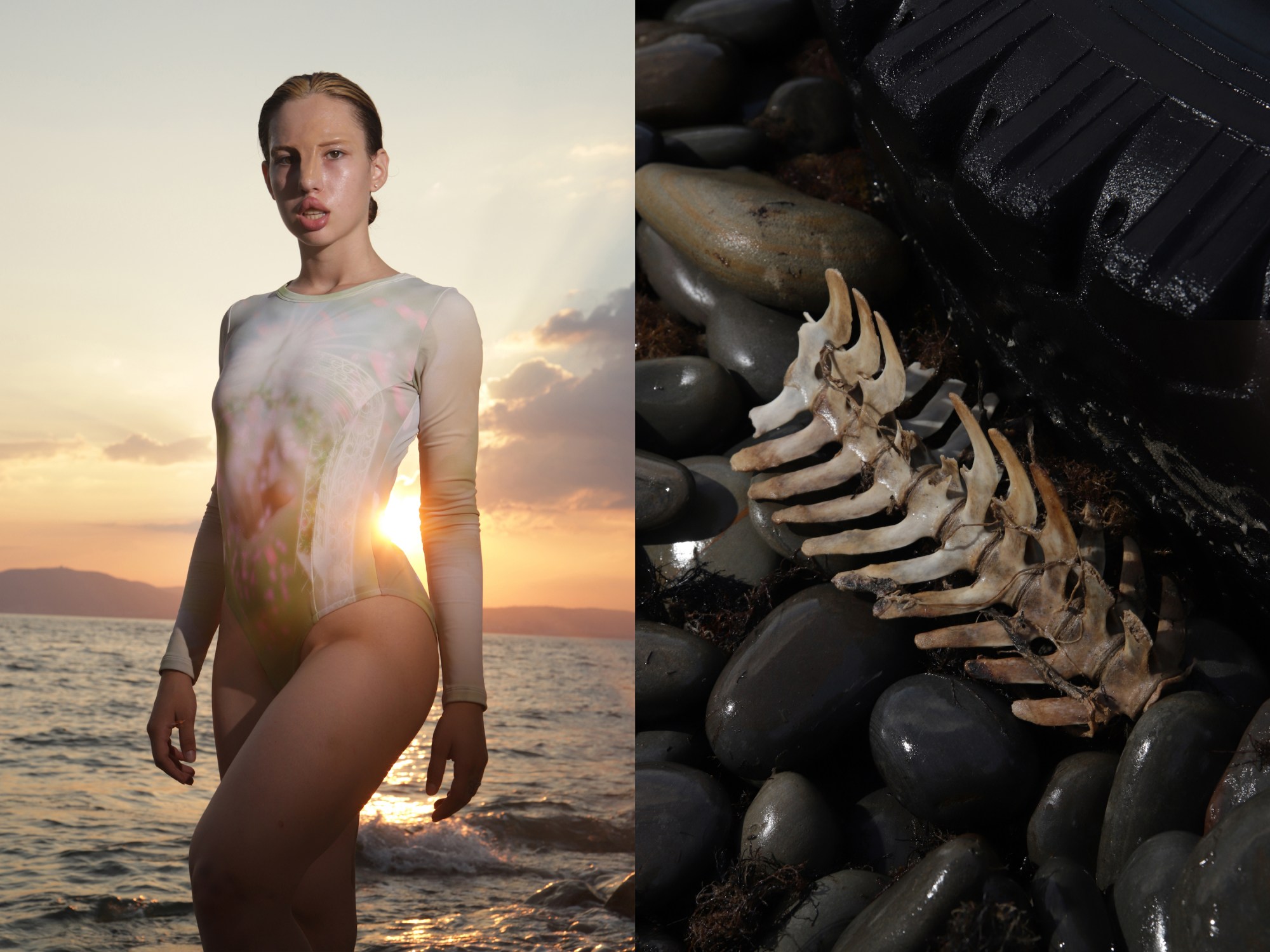
“Alina and Egor invited me to shoot a campaign for their new collection, which is called ‘I want to hug you, but I can’t,’” Chaika says. “The collection was made in collaboration with designer Evgeniya Egereva and artist OUR.V. As a guest artist, I developed this story in the direction of transforming people—imagining certain mutations that would reflect a post-apocalyptic world, and how people could change and adapt to new living conditions during such uncertain times.”
Chaika was particularly inspired by Donna Haraway’s 1985 text A Cyborg Manifesto. “Moving forward, humans are going to be increasingly fusing with our environment, and with technology,” he says. “The ‘body’ will develop, from added enhancements and hormonal experiments, and in this process, every part of us will become more meaningful. We’ll be able to be whoever we want to be.” The shoot for this project took place over three weeks on the Black Sea coast—near where the 2014 Olympics took place—with the intention of exploring how strange our post-quarantine reality might be, while also placing Russia’s environmental crisis under Chaika’s lens. The crew ended up crashing at eight different crowdsourced homes, and really immersing themselves in the fascinating Krasnodar territory—where they also held an open casting for the project’s local models.
“With the environment in Russia, everything is relatively bad,” Eremeev says, adding, “People here do not take the idea of global warming very seriously. In large cities, the air is very dirty.” Yet also, “over the past three years, we have seen more and more protests related to the environment,” with increasingly younger activists adding their voices to calls for action.
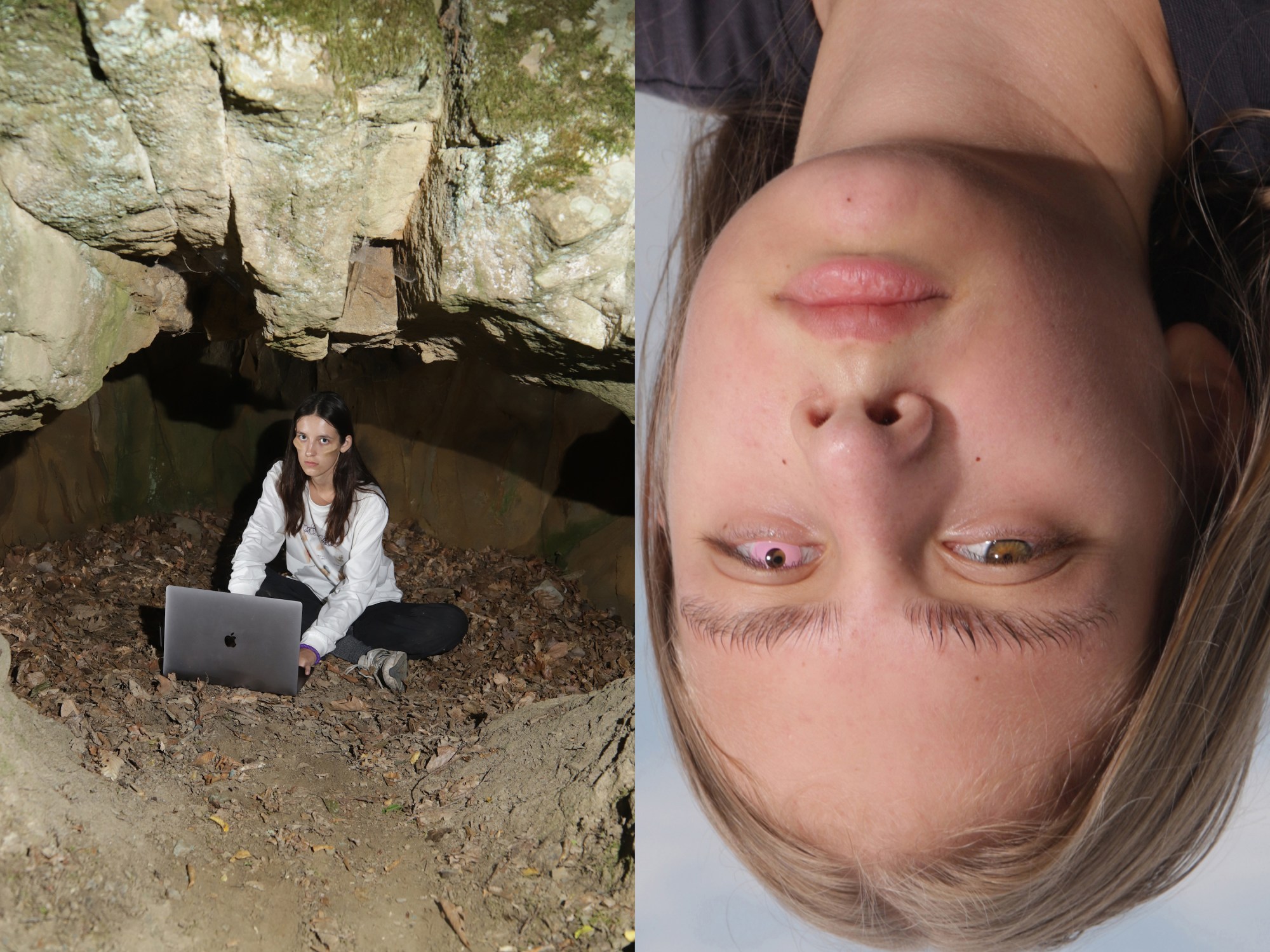
“After everyone got together [by the Black Sea], we realized that we wanted this campaign to not only be a form of artistic expression, but grow into a full project which could highlight the problems we find—insufficient water supply in Novorossiysk and Gelendzhik, [a massive oil spill, minimized by Russian authorities], deaths of dolphins, which we saw right on the shore, and birds flightless from fuel contamination.”
This summer in Russia—in neighbouring Belarus, and generally, the world— feels like a summer soaked in gasoline, one stray match away from catching fire. Against the backdrop of the coronavirus pandemic and escalating unemployment, some young people in Russia are feeling especially dejected. “Putin held a recent vote to change the Constitution, the purpose of which was to give him the right to be elected for two more terms. The voting period lasted for several days without supervisors, and without the ability to check the results—and the governor of the only region where the results were more or less accurately reported, was removed from office and put in prison.”
“Right now the world is currently going through a global transformation,” Kultrab asserts. “So now we want to prove that a fashion brand is not just about producing beautiful clothes—a brand can build a community, and act in ways that lead to real change, as well.”
This interview has been translated from Russian.
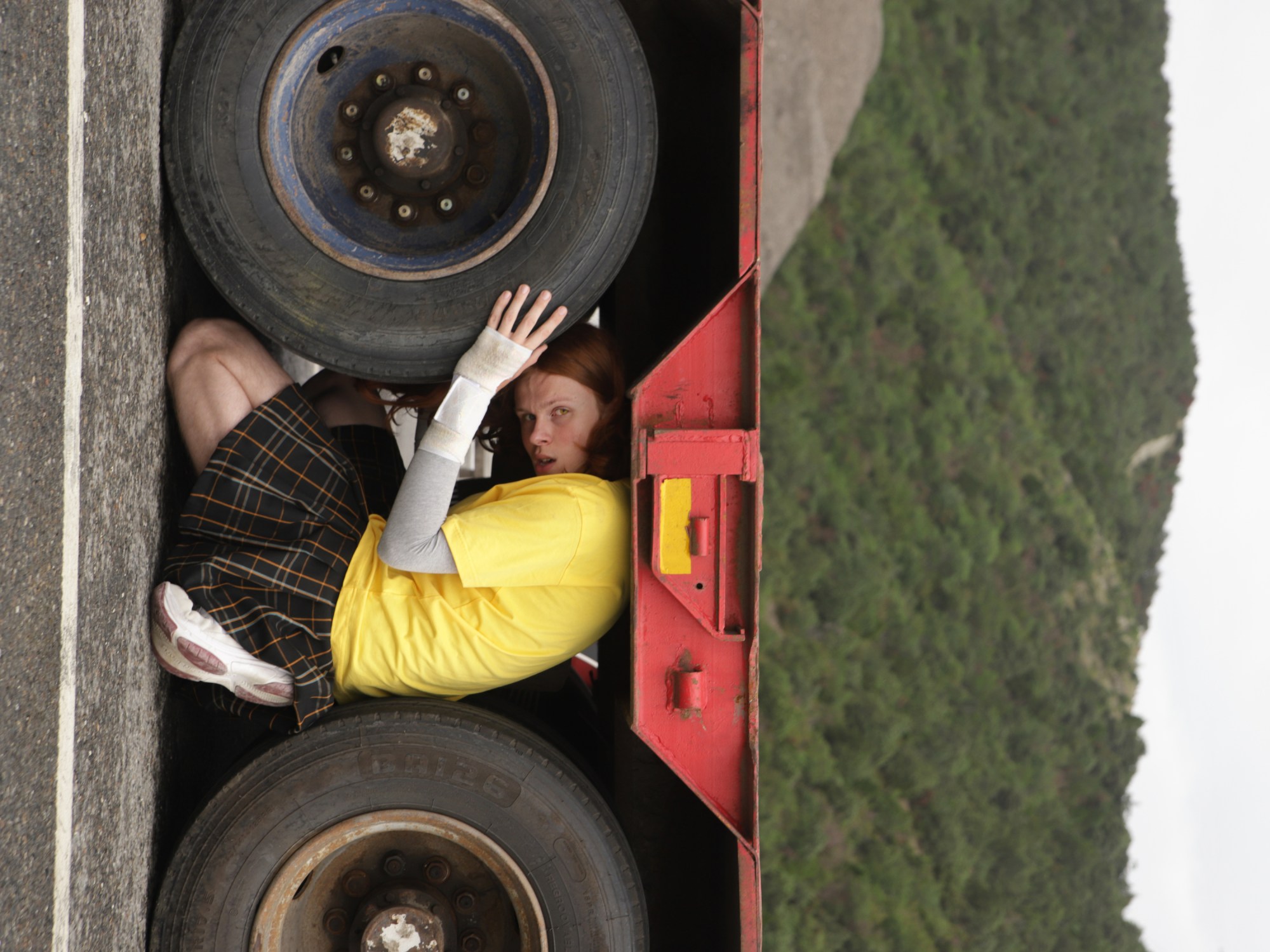
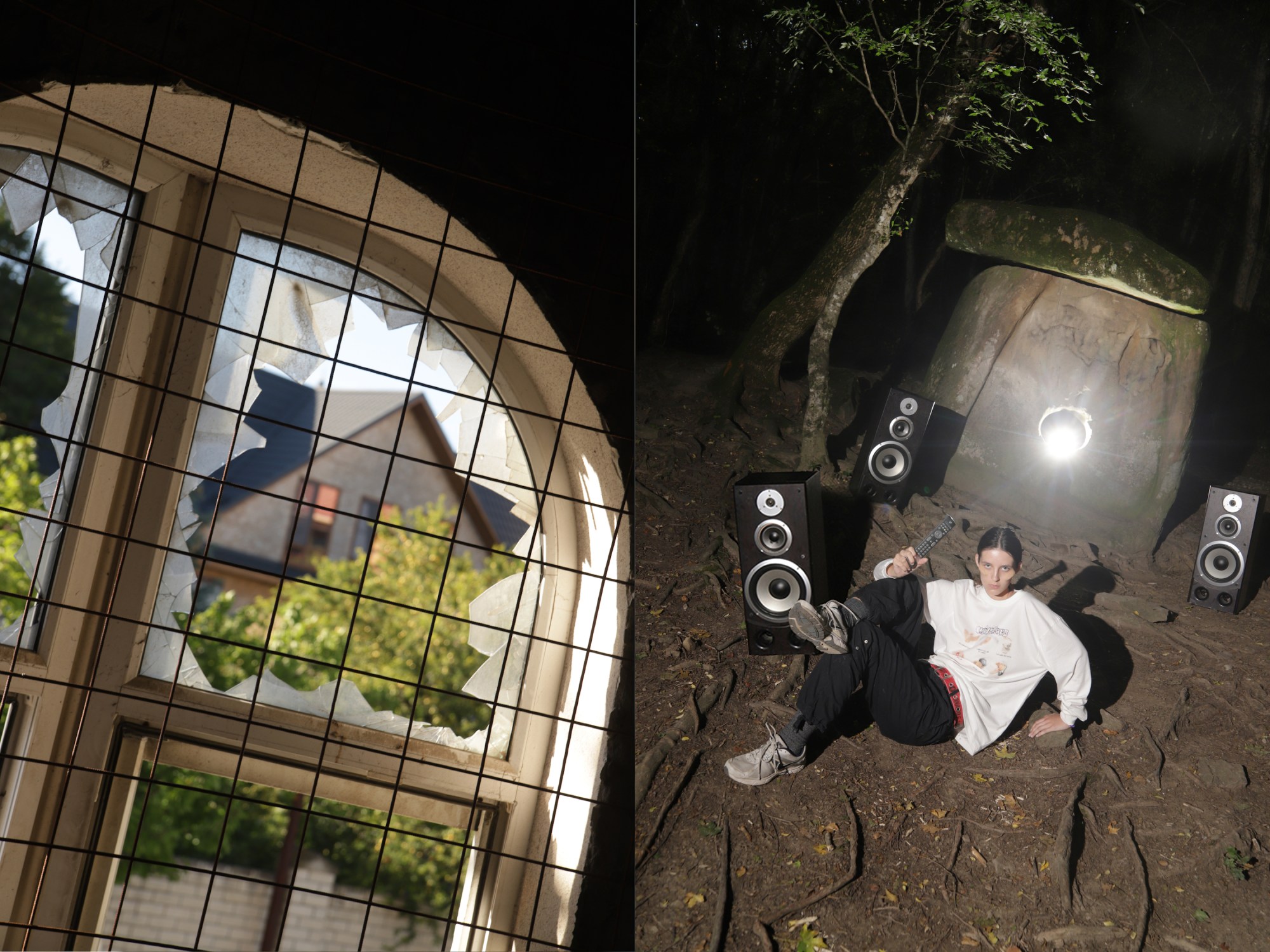
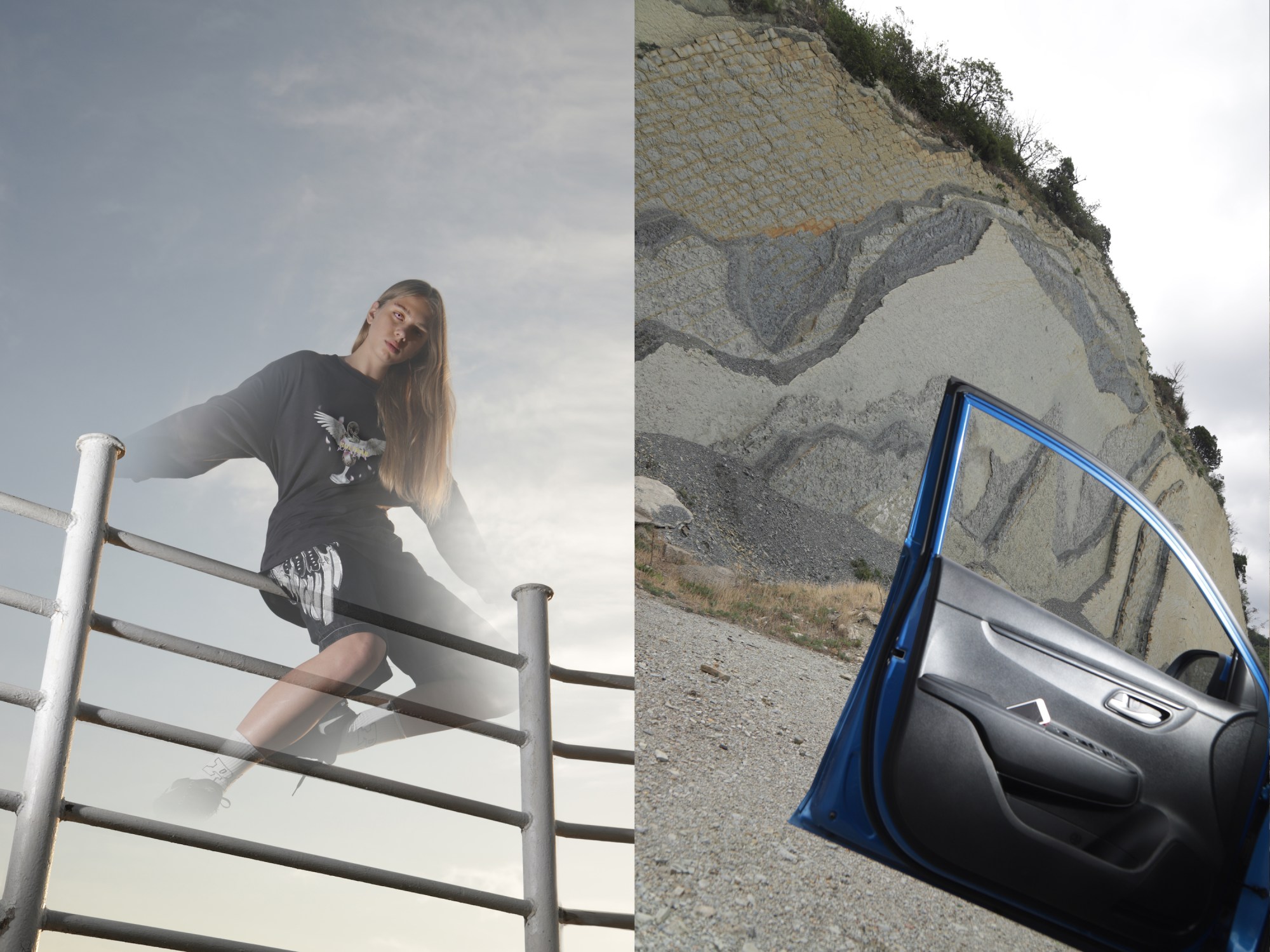
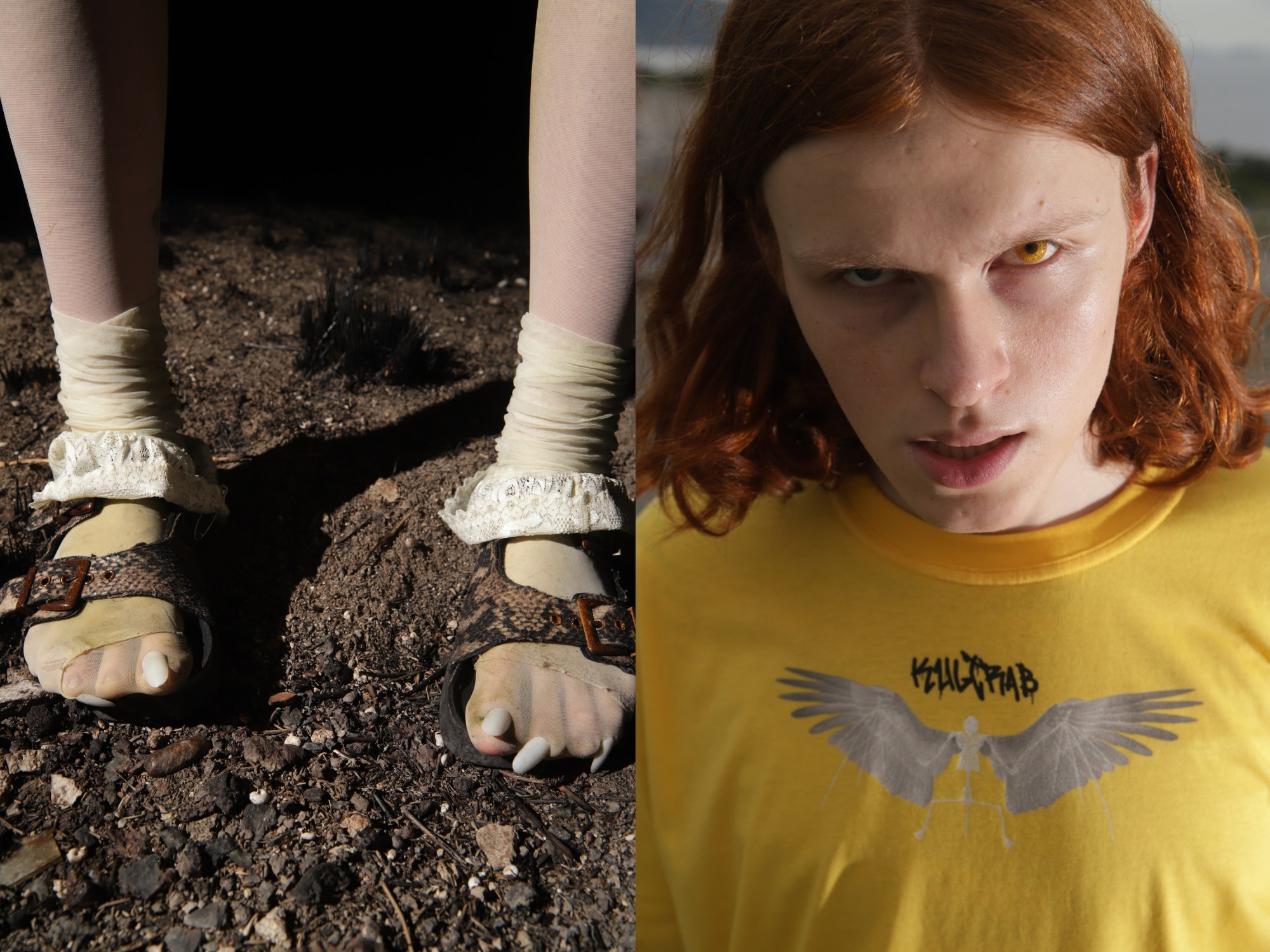

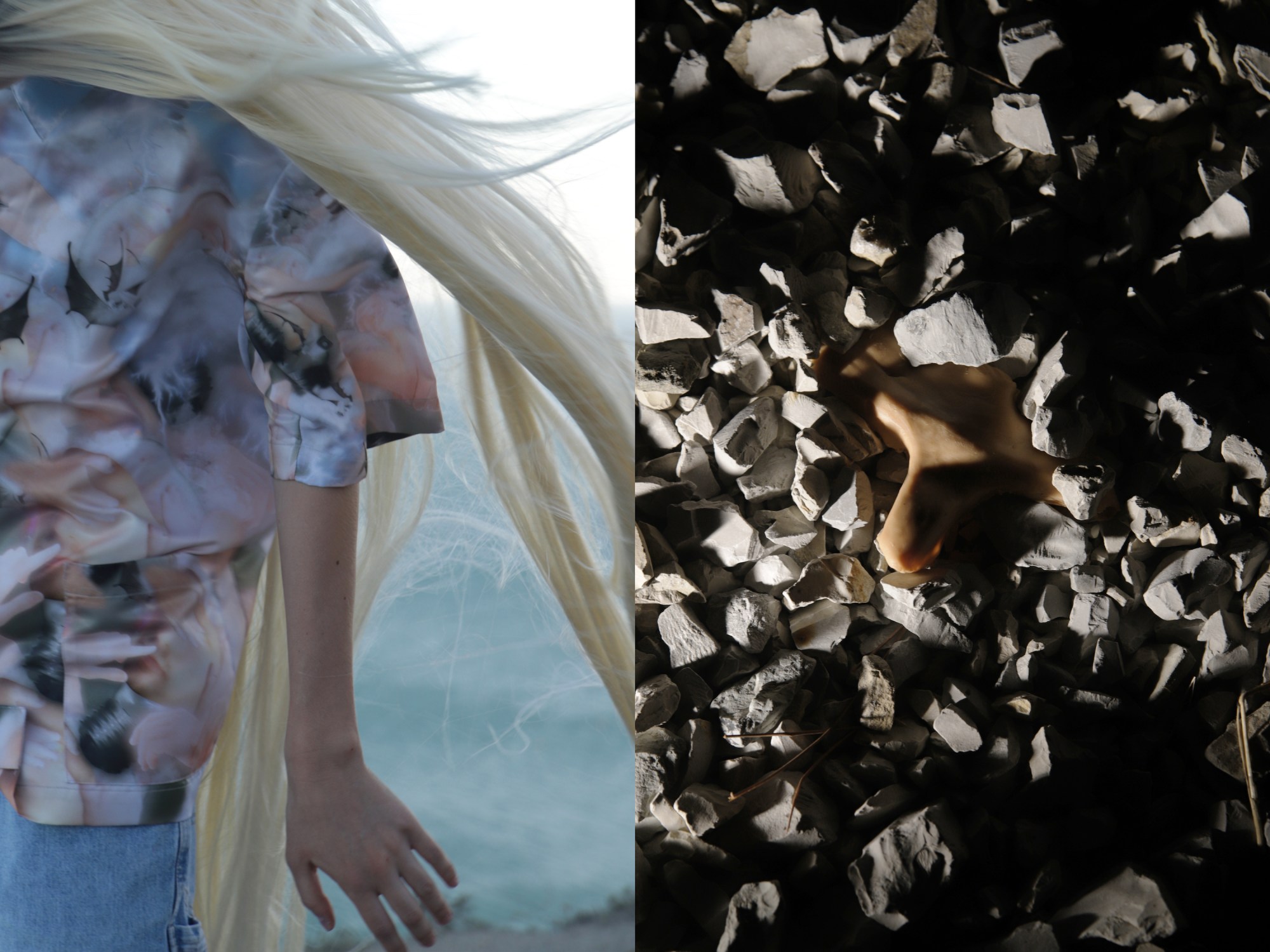
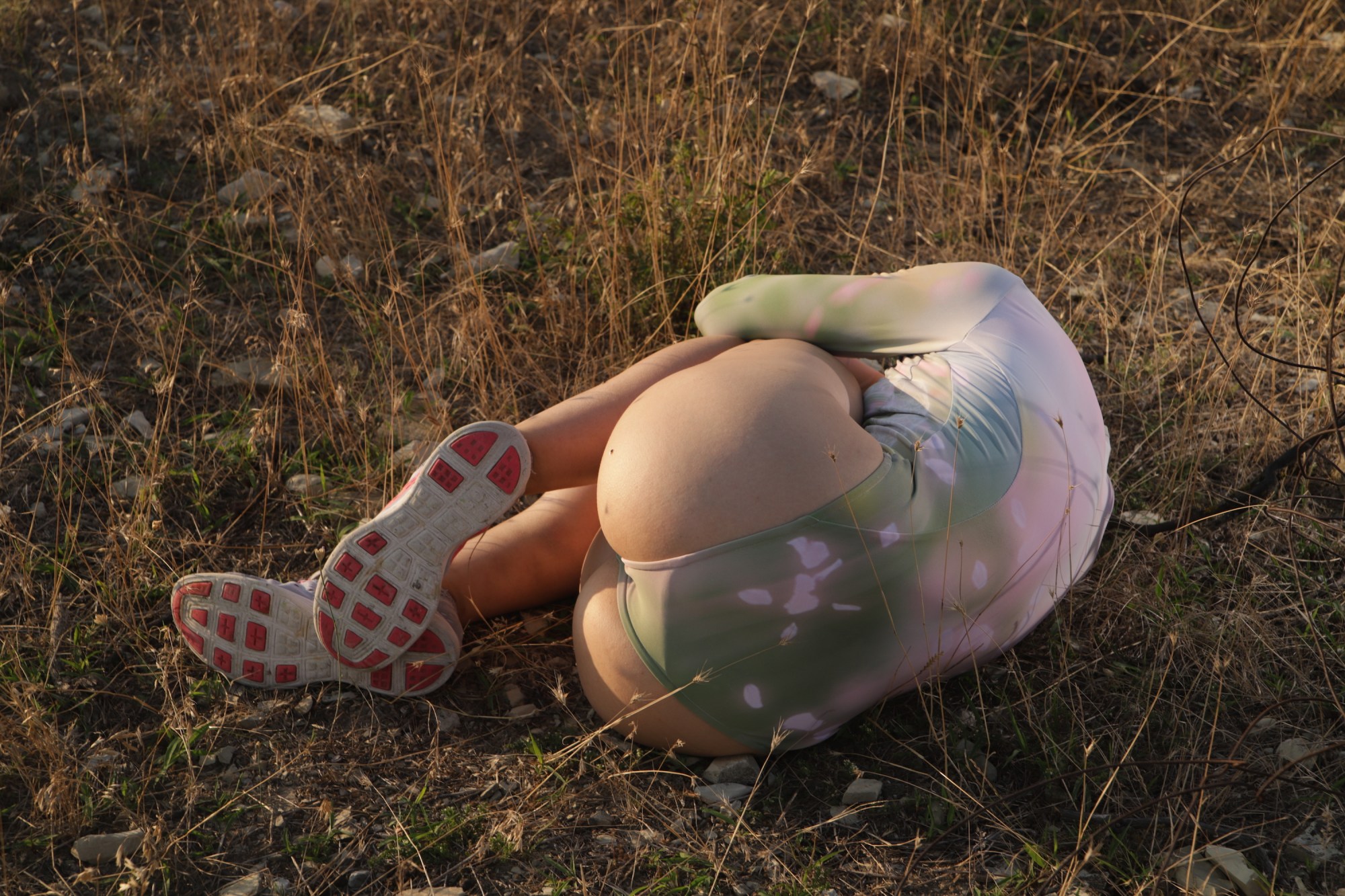
Credits
Photography Sasha Chaika
Producers Alina Muzychenko & Egor Eremeev
Assistant Producer Lena Grechka
Styling Alina Muzychenko & Sasha Chaika
Makeup and hair: Sasha Zhelonkina & Darya Esenina
Fashion Design Evgeniya Egereva
Artist Anton Spirikov, OUR.V
Models:
Dasha Zhukova, Daniil Ikmek, Valeria Sergeeva, Vova Kaplenko, Timur Hayerov, Olya Ganzha, Masha Lermontova.
Special thanks to: Roma Uvarov, Beinopen, Olya Lermontova, Nat Kukina, Sasha Manakina, Roma Varum and Ruslan Ivanov.
